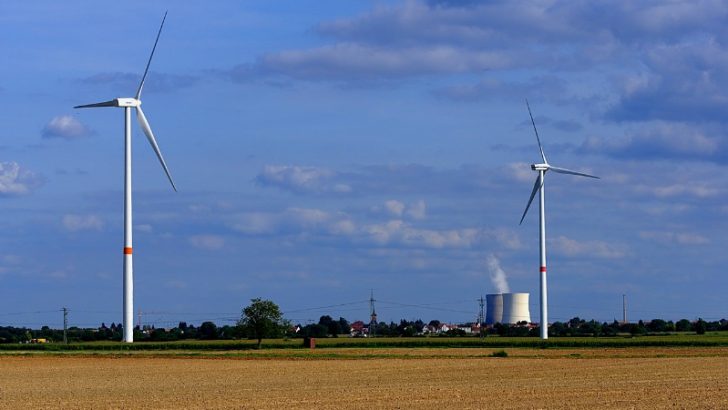Reactive Technologies and the UK’s National Grid have announced the successful completion of Project SIM. They believe they have, for the first time, measured and monitored grid stability – or system inertia – across an entire energy network for a continuous period. Before this they claim there was no way to take a continuous direct measurement of grid stability.
Instead, grid operators used estimates. Necessarily these had an unknown error margin. Such errors do not facilitate:
- trading of renewable and fossil fuel energy
- setting of multi-year budgets for energy reserve services
- shaping long-term investments in grid infrastructure.
In consequence this development should have a considerable impact on the way grid operators around the world manage their systems. Potentially it will reduce costs for operators and end customers as well as contribute to carbon emission reduction.
Marc Borrett, CEO at Reactive Technologies, comments; “Grid operators around the world are under pressure to bring new technologies into the control room that allow them to meet their obligations on energy costs, security of supply and decarbonisation. With GridMetrix, we’re giving grid operators access to unique direct data measurements from a national level right down to a granular post code level, so they can operate more leanly and better manage the nation’s supply and demand in line with accurate, real-time information.”

The hamster, the wheel and grid inertia
In the past grid system operators have had to estimate system inertia by monitoring which generators are running. They combined this data with their understanding of their system’s dynamic performance.
As the amount of low carbon power generation has increased (for example, from solar and wind), the amount of system inertia decreases. Wind and solar generation lack the heavy spinning parts which traditional generators possess.
This means that there is less stored energy to counteract any potential disturbance. In addition, systems involving renewable energy need to be fine tuned to keep a grid stable. More than ever before, system operators need to know the amount of system inertia in real time.
In this context an analogy is applicable to a hamster on a wheel. When the hamster (the power) is running, both it and the wheel move together. When the hamster stops runnning, the power generation stops. Both the hamster and the wheel will maintain momentum for a time before slowing to a halt.
There is no wheel in solar or wind – just a hamster running (the sun shining, the wind blowing). When it is night or the wind stops, power generation ceases. In contrast, traditional power stations act like huge flywheels. They help keep the system stable in case of a fault.
Why is grid inertia important?
The global energy sector is transitioning from carbon intensive fossil fuel generation to renewable energy. This brings new opportunities (like V2G) as well as new challenges for electricity grid operators. Of particular concern is intermittent energy generation which complicates maintainance of power supply security.
Conventional power generation possesses inertia. Grid operators use this to assist a grid to absorb sudden power loading changes. System inertia is, therefore, a measure of an energy network’s resilience to some types of disturbances within the power system. This can be a the sudden disconnection of a large power station due to a fault – or the wind stopping or dark clouds obscuring the sky.
One downside of increasing the share of renewable energy is the reduction of availability of this inertia. This can makes grid performance more volatile. It also means reserves have to be larger, to cope with the inherent grid inertia uncertainty. If grid operators take no action, the decrease in system inertia will lead to growing costs for procuring energy reserve services. This involves investment in grid reinforcement and, potentially, trips or outages.
What does measuring and monitoring grid inertia address?
Ofgem’s Network Innovation Allowance funded Project SIM to use Reactive Technologies’ GridMetrix solution. This project exploited the experience discovered in a different project, one where Reactive used its telecoms Grid Data Measurement System (GDMS) to transmit data through the National Grid network. This made the National Grid behave as a communications channel to collect and broadcast signals to receiver devices over long distances.
Project SIM explored if Reactive’s technology could measure grid inertia. It proved it could, around the clock for the National Grid. By using the GridMetrix solution, the National Grid obtained for the first time a real-time view of the grid inertia ‘available’. In addition, accurate inertia data supports:
- informed network re-enforcement decisions
- optimised procurement of energy reserve services
- a capability to integrate ever large amounts of renewable energy generation.
What does this mean?
With such a capability, grid operators can plan for, and respond to, grid destabilisation events faster and at a lower cost. For grid – and other transmission system operators (TSOs) – being able to measure inertia continuously, provides control room operators with information which will enable them to:
- react much faster to changes in their grids
- ensure necessary actions occur to re-balance the system.
As importantly, in a world committed to energy provided from renewable energy sources, the estimation of grid inertia can be replaced with accurate measurements. As rotary or other traditional energy inertia shrinks, with data, TSOs can plan for alternative or substitute resources – without requiring guesswork and hugely expensive, preventative over-provision.
Renewable generation reached 50% of power generation at times in the UK this year. If nothing was done, as renewable generation increases, inertia in the grid would decrease. Instead of having to spend more on procuring energy reserve services and investing in grid reinforcement to prevent trips or outages, TSOs should be able to plan for grid inertia and deliver energy security – which may lead to a reduction in customer energy bills.



























